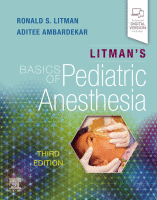Physical Address
304 North Cardinal St.
Dorchester Center, MA 02124

You’re Reading a Preview Become a Clinical Tree membership for Full access and enjoy Unlimited articles Become membership If you are a member. Log in here

Because critically ill children may occasionally present for emergency surgery, all anesthesiologists should have a working knowledge of the most common critical illnesses and their therapies. In this chapter, we review the clinical features of these illnesses, and also describe…

With approximately 15,000 deaths per year, trauma is the leading cause of death in children over 1 year of age in the United States. Anesthesiologists and anesthetists in nearly every type of hospital setting will eventually be exposed to the…

Pain is considered chronic when it is constant or recurrent and lasts for more than 3 months. It may persist because of ongoing tissue inflammation, as seen in children with inflammatory bowel disease or juvenile rheumatoid arthritis. It may also…

“Acute pain” in the pediatric setting is generally nociceptive pain arising from tissue injury, inflammation, or infection. It is typically most pronounced immediately after the insult and gradually improves as the tissues repair. This type of pain usually responds to…

Local anesthetics are synthetic derivatives of cocaine, a plant alkaloid obtained from the leaves of the South American coca plant, and the first local anesthetic to be discovered. Cocaine is a benzoic acid derivative coupled to a tertiary amine compound…

Insufficient knowledge about the pharmacology of analgesic medications in the pediatric age group has led to inadequate treatment of pediatric pain partly related to the fluctuating pharmacokinetic and pharmacodynamics properties of analgesics during development. Although all analgesic medications have undergone…

The next several chapters are dedicated to teaching trainees about pediatric pain and the various options for pain management in children. In this first of five chapters, we introduce the topic of pediatric pain assessment. Because expression of pain is…

The pediatric postanesthesia care unit (PACU) is a noisy and chaotic environment. Nurses are attempting to calm crying toddlers, parents are being educated, physicians are being summoned for discharge orders, and the phones ring continuously with reports of available inpatient…

More and more pediatric anesthesia cases are scheduled in non operating room (OR) locations. These locations are often far from the main surgical area, and some anesthesiologists feel out of place in these environments because they may not have easy…